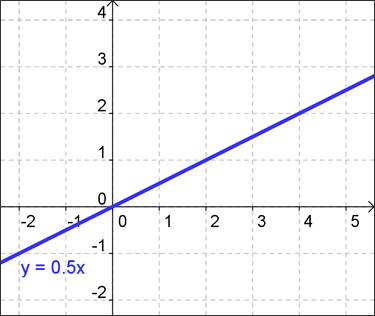Direct Variation
When two variables are related in such a way that the ratio of their values always remains the same, the two variables are said to be in direct variation.
In simpler terms, that means if A is always twice as much as B, then they directly vary. If a gallon of milk costs $2, and I buy 1 gallon, the total cost is $2. If I buy 10 gallons, the price is $20. In this example the total cost of milk and the number of gallons purchased are subject to direct variation -- the ratio of the cost to the number of gallons is always 2.
To be more "mathematical" about it, if y varies directly as x, then the graph of all points that describe this relationship is a line going through the origin (0, 0) whose slope is called the constant of the variation. That's because each of the variables is a constant multiple of the other, like in the graph shown below:

Walang komento:
Mag-post ng isang Komento